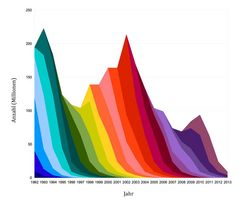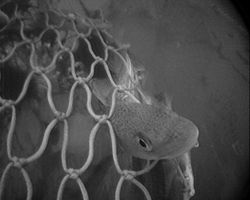The sustainable use of commercial fish stocks in the Baltic Sea is one of our central research goals. How can we manage fish stocks in such a way that enough fish remain in the sea to ensure offspring for future generations of fish and fishermen?
The Baltic Sea, as the world's largest brackish water sea in one of the most highly developed economic regions on earth, is a magnificent open-air laboratory for science, including fisheries biology. Here we study the life cycles of all commercially important fish species, their interactions with fisheries and the environment, and further develop stock models. The most important commercially exploited fish species in German fisheries in the Baltic Sea are cod, herring, sprat and the flatfishes plaice, flounder, dab and turbot. The fish stocks have adapted to the hydrographic characteristics of the different basins within the Baltic Sea over thousands of years. We try to understand how the fish and fish stocks react to current biotic and abiotic influences, to changes in these factors and to the influence of fishing. To do this, we conduct elaborate research trips (monitoring) and sample commercial fisheries to obtain the most accurate data possible on the removal of fish from a stock. In addition to classical data collection, we conduct research on applied topics in fisheries biology.
Scroll to top

![[Translate to English:] [Translate to English:]](/media/_processed_/d/7/csm_Startseite-OF_03_c0dfd6e750.png)
![[Translate to English:] [Translate to English:]](/media/_processed_/a/3/csm_20181116-151457-Stella-Jerome-Fischfalle-Warnem%C3%BCnde-Dorsche-im-Netzk%C3%A4fig-5691_heller_3050c72fa2.png)










